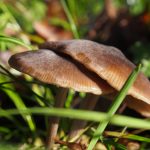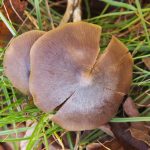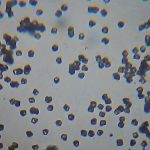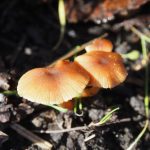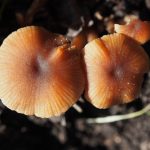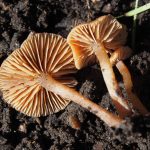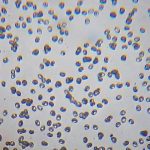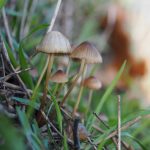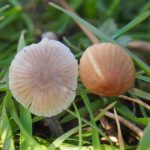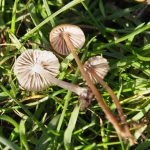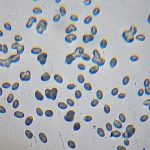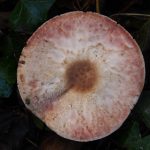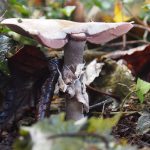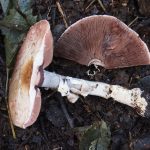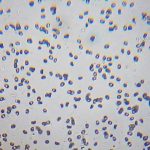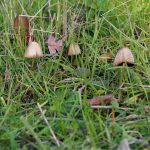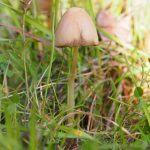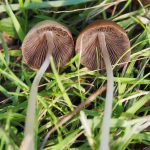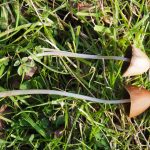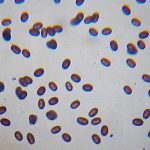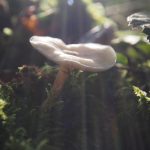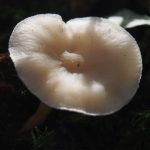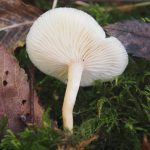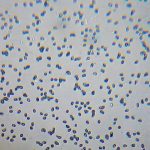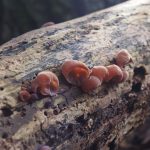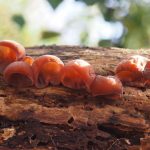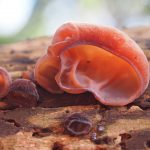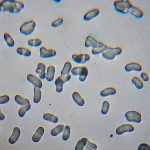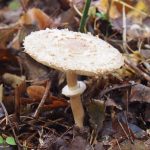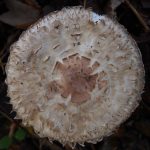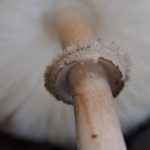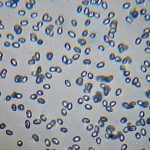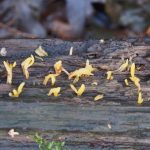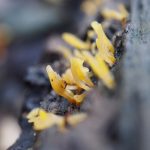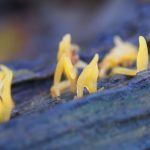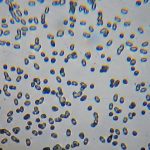1.
Coral Spot (
Nectria cinnabarina).
-
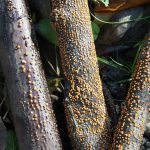
- 1. Coral Spot
-
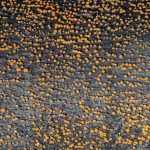
- 1. Coral Spot
-
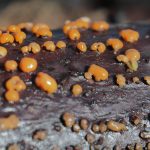
- 1. Coral Spot
-
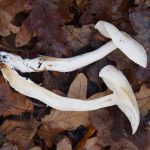
- 1. Coral Spot
Growing on thinner branches and twigs. Hundreds of small blobs. Up to 2mm across, mainly 1mm. No smell. Apparently this is Coral Spot in the asexual phase, which is commoner to find than the sexual phase.
2.
Psathyrella corrugis.
-
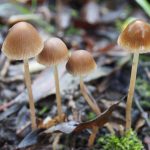
- 2. Psathyrella corrugis
-
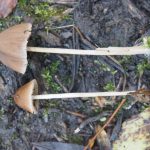
- 2. Psathyrella corrugis
-
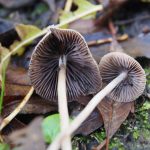
- 2. Psathyrella corrugis
-
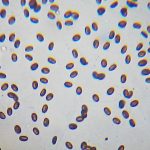
- 2. Psathyrella corrugis
Growing on rotting wood debris. Lots scattered around. Cap 1.5-3cm, up to 9cm high. Slight indistinct smell. Lots of variable appearance, and it's quite likely that there were other similar species present in the area. Difficult to identify with any certainty. ID is wild guess. Sporeprint Dark blackish. Spores 9-10.5µ x 5-7µ.
3.
Orange Peel Fungus (
Aleuria aurantia).
-
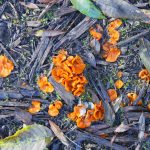
- 3. Orange Peel Fungus
-
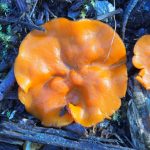
- 3. Orange Peel Fungus
-
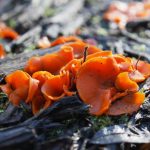
- 3. Orange Peel Fungus
-
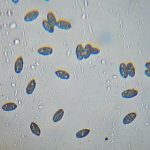
- 3. Orange Peel Fungus
Growing on compacted soil and rotting wood debris. Lots scattered in wide area. Each saucer up to 3cm across. Slight sweet earthy rubbery smell, although that could be the substrate. Unusual looking large spores with ornamentation. Spores 16-19.5µ x 8-9.5µ.
4.
Dead Moll's Fingers (
Xylaria longipes).
-
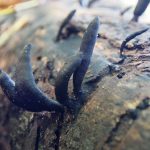
- 4. Dead Moll's Fingers
-
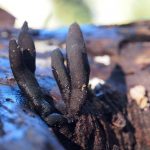
- 4. Dead Moll's Fingers
-
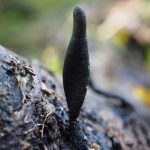
- 4. Dead Moll's Fingers
-
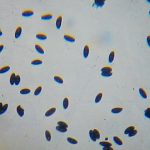
- 4. Dead Moll's Fingers
Growing on large log. Several clusters and individuals. Up to 5cm long. No smell. Tough flesh. Spores 11-14µ x 5-6.5µ.
5.
Laccaria striatula.
-
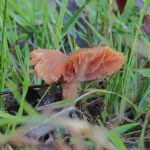
- 5. Laccaria striatula
-
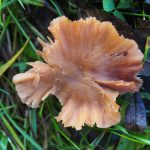
- 5. Laccaria striatula
-
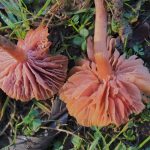
- 5. Laccaria striatula
-
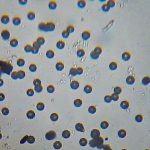
- 5. Laccaria striatula
Growing on bare earth in gaps in grass, not far from several trees of different species. Small group of four. Cap up to 4cm, stem up to 3.5cm. Slight mushroom smell. Could be Twisted Deceiver but they simply don't get this big. So probably L.striatula, even though it doesn't look much like the ones I found before. ID is almost sure. Sporeprint White. Spores 8.5-10.5µ x 8-10µ.
6.
Common Funnel (
Clitocybe gibba).
-
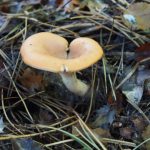
- 6. Common Funnel
-
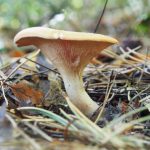
- 6. Common Funnel
-
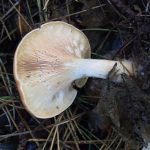
- 6. Common Funnel
-
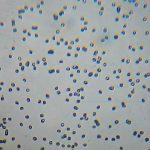
- 6. Common Funnel
Small group. Three or Four. Cap up to 8cm but some much smaller. Typical sweetish slightly perfumed funnel smell. My spores seem to be too small for some reason, but I don't see any other species that this could be. ID is almost sure. Sporeprint White. Spores 3-4.5µ x 2.5-4µ.
7. Unidentified.
-
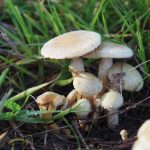
- 7. Unidentified
-
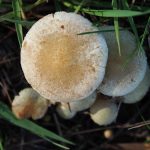
- 7. Unidentified
-
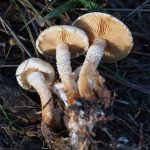
- 7. Unidentified
-
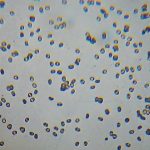
- 7. Unidentified
Growing on bare earth in grass in a small dip, could be buried wood there. Several clusters. Cap up to 3cm. Slight indistinct fungus smell. Tough stem. I can't see what this is. I saw something very similar a few years ago and couldn't identify it then either. Looks a bit like a Flammulaster or Powercap or Webcap but none of them fit well. Sporeprint Mid-brown. Spores 5-6.5µ x 3-5µ.

